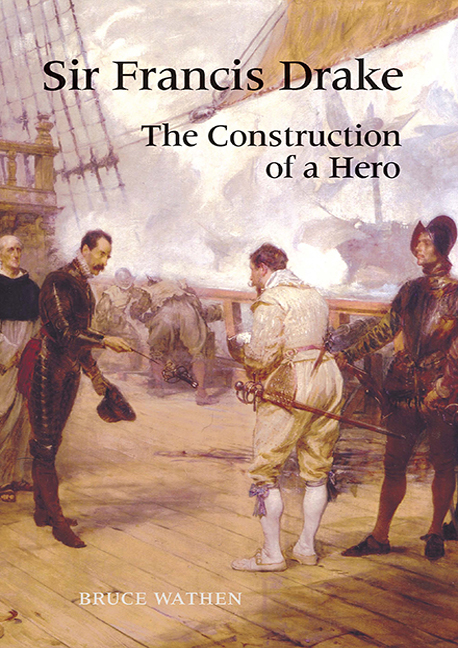Book contents
- Frontmatter
- Contents
- List of Illustrations
- Dedication
- Acknowledgements
- Introduction
- Chapter One Auxilio Divino
- Chapter Two ‘Sir Francis Drake Revived’
- Chapter Three ‘Behold the warrior dwindled to a beau’
- Chapter Four ‘Homage to Britannia’
- Chapter Five ‘Who the New World Bade British Thunders Shake?’
- Chapter Six ‘The Prose Epic of England’
- Chapter Seven ‘Mould him in bronze’
- Chapter Eight ‘Gun to Gun he'll Challenge us’
- Chapter Nine ‘A pirate, and a good one’
- Chapter Ten The Future
- Bibliography
- Index
Chapter Three - ‘Behold the warrior dwindled to a beau’
Published online by Cambridge University Press: 11 May 2017
- Frontmatter
- Contents
- List of Illustrations
- Dedication
- Acknowledgements
- Introduction
- Chapter One Auxilio Divino
- Chapter Two ‘Sir Francis Drake Revived’
- Chapter Three ‘Behold the warrior dwindled to a beau’
- Chapter Four ‘Homage to Britannia’
- Chapter Five ‘Who the New World Bade British Thunders Shake?’
- Chapter Six ‘The Prose Epic of England’
- Chapter Seven ‘Mould him in bronze’
- Chapter Eight ‘Gun to Gun he'll Challenge us’
- Chapter Nine ‘A pirate, and a good one’
- Chapter Ten The Future
- Bibliography
- Index
Summary
The glorious reign of Queen Elizabeth opens to us a large field of matter for this history and lays before us the noble plans and ground-work, upon which the whole superstructure of our Naval Glory is built.
(Thomas Lediard, The Naval History of England, 1735)
With Protestant succession secured by the Glorious Revolution of 1688, the problems surrounding the celebration of Sir Francis Drake, loyal subject and Protestant hero, were at once removed. It was not long before Drake was again ‘revived’ as an inspirational character at a time of national crisis. The outbreak of the Nine Years’ War in 1689 provided the perfect opportunity for Drake's exploits to be recalled. Drake was, in fact, a particularly relevant figure when we consider the parallels between the Anglo-French conflict and the war with Spain in the sixteenth century. Like Spain, France was a Catholic country; it also posed a very real invasion threat if England lost control of the Channel.Whether the similarities with the Elizabethan conflict were appreciated at the time is open to question, but there can be no doubting the appeal of Sir Francis Drake during the war years. Three more editions of Robert Burton's The English Hero had appeared by 1695.
As the previous chapter sought to establish, The English Hero was the standard work on Drake throughout most of the eighteenth century. Eleven editions appeared at regular intervals between 1701 and 1777, and not necessarily at times of armed conflict.While the sheer number of editions provides firm evidence of Sir Francis Drake's continuing popularity, we need to question just why the Elizabethan seafarer should still generate such interest. Linda Colley has shown how Protestantism made sense of the world for a huge number of Britons and also the way in which they marked their separate religious identity. The reasons for this concentration on religious separateness are not hard to find.
Eighteenth- and nineteenth-century Britons reminded themselves of their embattled Protestantism … because they had good cause to feel uncertain about its security and about their own.
- Type
- Chapter
- Information
- Sir Francis DrakeThe Construction of a Hero, pp. 48 - 66Publisher: Boydell & BrewerPrint publication year: 2009

